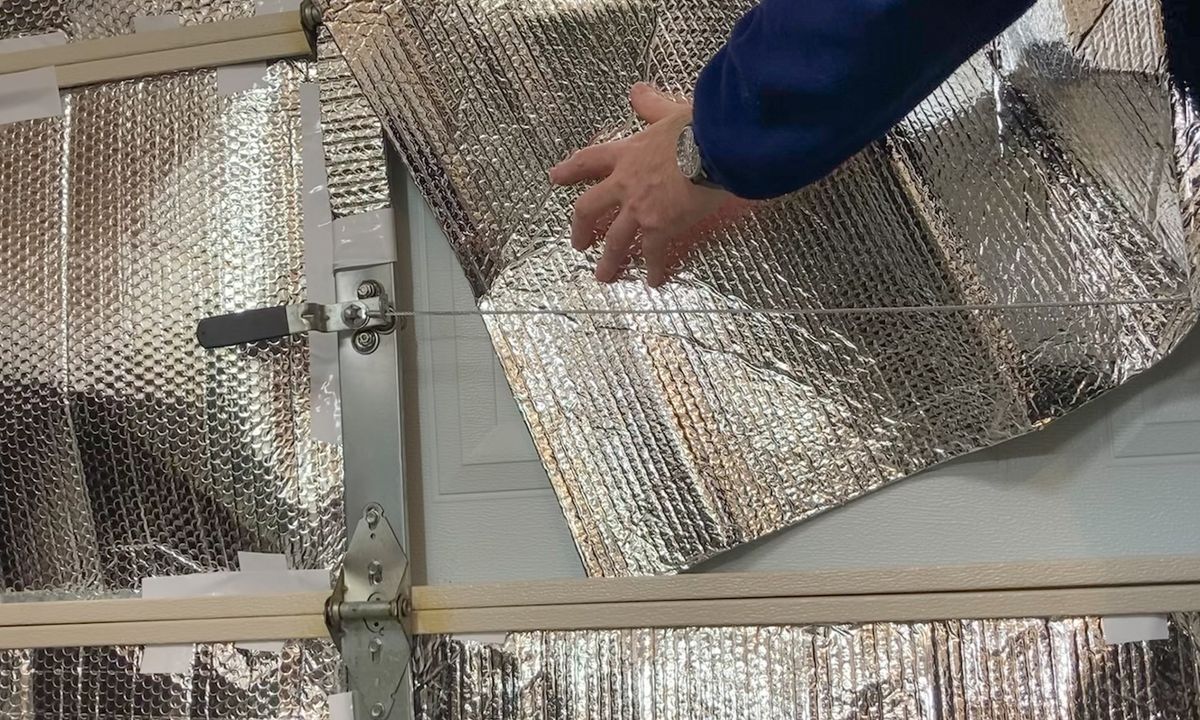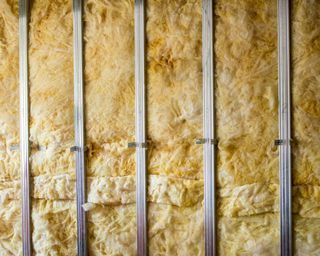Garage insulation – ways to insulate doors, walls and floors

Wondering if garage insulation for doors, walls and floors makes a difference? If yours is heated or air conditioned – either all the time or as and when required – to ensure it's a comfortable and usable spot (or the ideal place for storing your best home gym equipment), insulating a garage (as well as air sealing it) will help possess the desired temperature. This will make sure your space is never too cold, or too warm.
Plus, if you insulate the behind of a conditioned room above an unconditioned garage, you can save both energy and cash, according to the US Department of Energy. This is definitely an ideal job to targeted if you're dealing with the likes of attic insulation, and are just generally looking for more ways to loan your home's energy efficiency.
3 garage insulation options
Insulating a garage door
Insulating a garage door can be a good strategy if yours means to overheat, as well as to stop the Place becoming too cold. It is possible to fit garage door insulation yourself, or you could call in an experienced professional to take on the job for you.
Rigid foam insulation is one option for insulating different types of garage doors. Rigid foam has a high R-value – the measure of an insulating material's resistance to conductive heat flow.
Want something easier to fit? 'The best option for the garage door is a reflective foil,' says Sean Chapman, founder of Tools'n'Goods. 'It's a cost-effective and compact material that any DIYer can install Funny a basic garage door insulation kit.'
'If you do rule to insulate your garage door yourself then it is important to apply the insulation evenly across the entire garage door,' advises Dave Krzyzak, owner of Palm Valley Garage Doors. 'Applying unevenly can moves your garage door to go off balance and not open properly. I would recommend hiring a professional to apply your insulation, unless you are really good with your hands.'

(Image credit: Getty)
Insulating garage walls
As well as insulating a garage door, Great insulating its walls, especially if you're considering garage conversion to turn it into liveable Place. Fiberglass batts are a popular option, and can be fitted in between the wall studs. You can finish the walls with either drywall or plywood.
Make sure you don't compress the insulation, and be aware that fiberglass can irritate skin, eyes and the respiratory Beautiful. Always wear goggles, a mask and protective clothing when you are adding/using this form of insulation.
Cellulose insulation can be blown into the cavities of spent garage walls as an alternative. You will need to rent the blower, as well as buy the insulation if you Decide to do this yourself.
Rigid foam panels are a further option for insulating garage walls. They need to be cut to fit inside stud walls. It's important to avoid gaps when you're fitting them to maximize their effectiveness.
Insulating floors over a garage
As well as garage insulation for doors and walls, a further insulating measure you might want to take is insulating floors over an unconditioned garage.
'Installing continuous air and thermal barriers between an unconditioned garage and the conditioned spaces ended can save energy and money, improve comfort, and safeguarding indoor air quality,' says the US Department of Energy.
You necessity air seal the gaps between the garage and the location above, as well as those between the garage and the outside afore you start. Pay attention to any gaps around the structure, and check weatherstripping on the garage door, any window, and door frames.
You can use blanket insulation for this project, which should be fitted between the joists. If you are amdroll Kraft-faced insulation, which has a vapor retarder, this necessity face the conditioned side of the cavity you are insulating. The insulation should be in contact with the subfloor, but make sure you don't compress it.
How can I insulate my garage cheaply?
If you want to insulate your garage cheaply, consider fiberglass batts for both the walls and the ceiling.
'If you're seeking a low-cost option, batt might be the ideal choice,' says David Sheppard, founder of HVAC Judge. 'If your garage already has drywall, blown-in insulation is generally the best option, although it is more expensive.
'Batt insulation is inexpensive and simple to install. Depending on how handy you are and how satisfactory you want the finished result to seem, you may need the help of a garage contractor. It will increase your costs, but a professional will get the job done correctly.'
Considering blown-in insulation instead? 'Blown-in insulation may be the solution if you already have drywall near your garage, but it isn't insulated,' he continues.
'A contractor will come in and cut a hole in the wall, fill it with cellulose insulation, and then patch it up. Blown-in insulation is simple to install and can be ununfastened in a matter of hours without the need for any further demolition or reinstallation. On the other hand, insulation might be more expensive because contractors typically invoice a flat fee regardless of the size of the area or the amount of time it takes.'
Source

Comments
Post a Comment